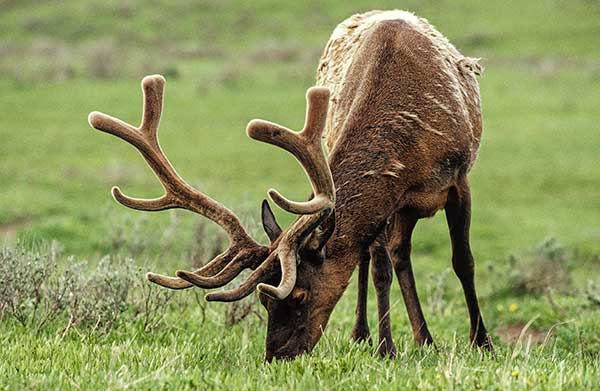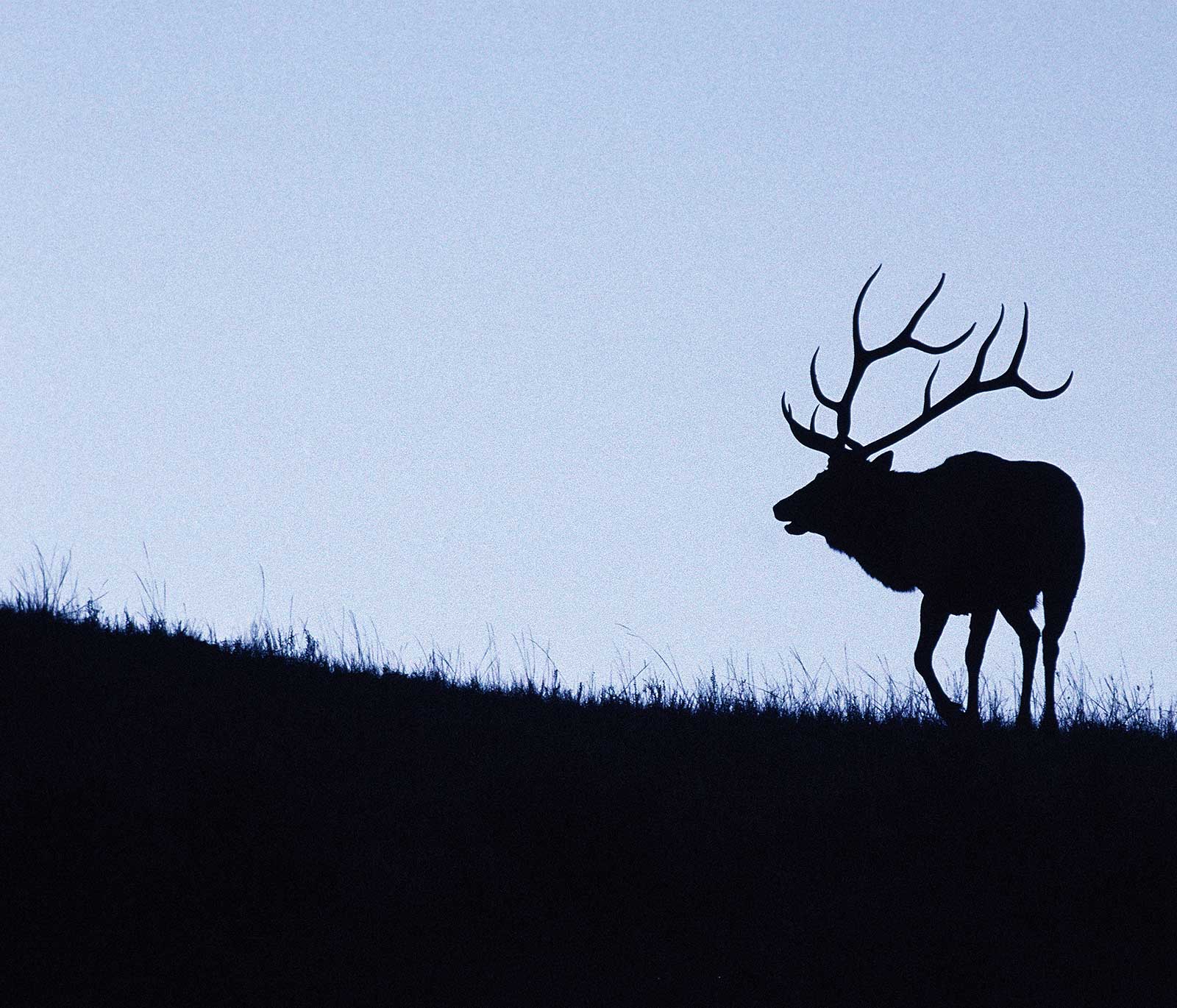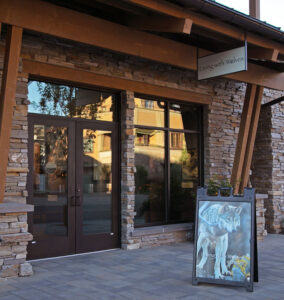As settlers moved west, they brought the pre-conceived notion that predators held no real value in the natural world. It was during the westward expansion of the late 19th century, and through the first few decades of the 20th century, that wolves were wiped out in the American West. The frontier had been tamed, but at what cost? It took several more decades for people to begin to recognize unforeseen ecological consequences of this eradication.
More than 25 years ago, wolves were reintroduced to Central Idaho and Yellowstone National Park by the federal government in an effort to restore an essential but missing element of the American West. It was hoped that the reintroduced wolves would be able to expand their range, finding their way back into the large expanses of available habitat.
Unwarranted Fears and Misplaced Blame
Scientific research, especially in recent decades, has revealed how critically important wolves and other top-level carnivores are to natural systems around the world. While wolves have made considerable progress, recovery is still underway. Large portions of the West are either completely devoid of wolves or just beginning to witness their return.
Since before their reintroduction and throughout their ongoing recovery, there has been much unwarranted fear and concern, mostly in rural areas, over what the return of wolves would bring. This was the case throughout the West, but especially in Idaho, where the legislature and governor were a driving force behind hysteria-driven anti-wolf fear and misinformation. Still today, a commonly shared belief is that wolves will explode in numbers and consume everything in their path. This ominous vision, portraying a purely mythological creature, suggests that wolves will eat all of the big game animals. Once they have eaten all the elk and deer, they will move on to smaller animals such as rabbits, until after draining all of nature’s bounty, they will ultimately turn to humans as a source of food. If that sounds overstated, one need only look at the Wolf Disaster Emergency Bill promulgated in 2011 to see that this type of unwarranted fear has been officially promoted in Idaho. Decades later, none of the dire predictions have come to pass.
The reintroduced wolves of the American West have yet to attack a single person and their preferred prey animals are doing well. Wildlife populations naturally ebb and flow, but since wolf reintroduction, elk and deer have been doing particularly well in the western states that boast the highest number of wolves. Those intent on opposing wolf recovery point to isolated examples of elk herds that have gotten smaller and claim wolves are the cause. However, in those that have been researched, the findings show that a variety of factors influence how and why these individual herds shrink and grow.
For example, in the Lolo region of Idaho and Montana, a dramatic shift in habitat, caused by the largest fire in the history of the two states, precipitated the decline in elk. In the Bitterroot Mountains of Montana, mountain lions were found to be killing five to six times more elk calves than wolves, and several other factors were more significant contributors to the decline in the local elk herd than predation by wolves. Nevertheless, wolves were unjustifiably held responsible for the reduced number of elk. In Yellowstone, there had been no significant predator base for more than half a century. A large increase in the bear population, and the return of both mountain lions and wolves, revitalized predator populations with far-reaching implications throughout the ecosystem, including the return of prey populations to healthy numbers.
Tracking Idaho's Elk Numbers
Idaho has been keeping track of elk numbers since 1935. Elk are seen as a resource, managed in order to maximize profit and provide reliable hunting opportunities. Aside from fixed income from federal grants, selling elk to hunters is a leading revenue source for the Idaho Department of Fish and Game (IDFG). The current population estimate in Idaho is more than 120,000 elk, just 4% below the all-time highest count of 125,000.
As a result, hunters are flocking to hunt elk in Idaho. Non-resident elk tags have sold out earlier and earlier every year since 2017. Rick Ward, the Deer/Elk Program Coordinator for IDFG, said in August of 2020, “We are in the second Golden Age of Idaho elk hunting.” Yet IDFG continues to find new ways to kill as many wolves as possible, and some hunters continue to claim that wolves are destroying elk hunting.
Why are elk doing so well despite the fact that Idaho has the highest wolf population of the western states, excluding Alaska? Could it be that more than 25 years of predation pressure from wolves has strengthened prey herds and reawakened survival instincts that have allowed prey and predator to exist side by side for millennia? Researchers in Yellowstone now report changes in elk behavior and the way in which they respond to the renewed threat of predation. When confronted by wolves, not just bull elk, but even cow elk now often stand their ground, turning around and returning the assault with their own aggressive advances. Yellowstone’s chief wildlife biologist, Dr. Doug Smith states, “A prime-age cow elk in Yellowstone between the ages of 2 and about 13, is virtually invulnerable to wolf predation.”
Each species of predator specializes in different feeding patterns on elk and take advantage of different opportunities. Bears are specialists in finding and feeding on elk calves every spring. Mountain lions also feed on more elk calves than wolves do. A 2019 study from Idaho showed that mountain lions kill more adult female elk than wolves and considerably more elk calves than wolves.
Research from Yellowstone shows that wolves prefer to target female elk between 13 and 16 years old, near the end of their life. By hunting the older female elk, wolves remove the competition for younger and more reproductive cow elk. In contrast, the average cow elk selected by a hunter is two to six years old, during the reproductive and fertile prime of a cow elk’s life.
In each of the past eight years, hunters have killed over 20,000 elk in Idaho. That marks the second longest stretch of over 20,000 elk taken annually in the state’s history. These banner hunting years are occurring in parallel with a recovering wolf population in Idaho. The numbers simply do not support the arguments of those who insist wolves are detrimental to elk and hunting. In light of the beneficial effects that have been observed when wolves and elk coexist, perhaps it is less of a mystery as to why elk are flourishing alongside a population of wolves.




